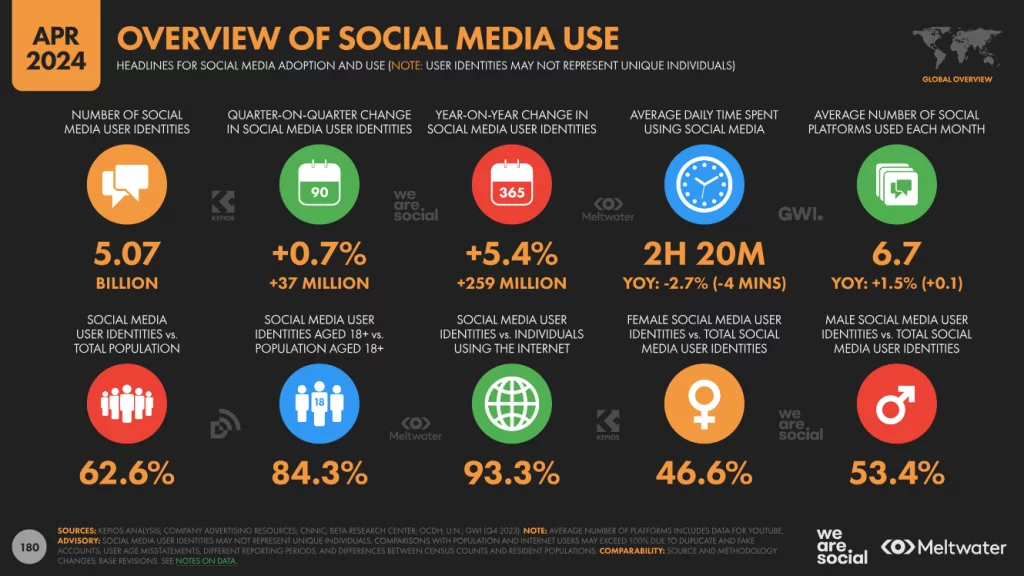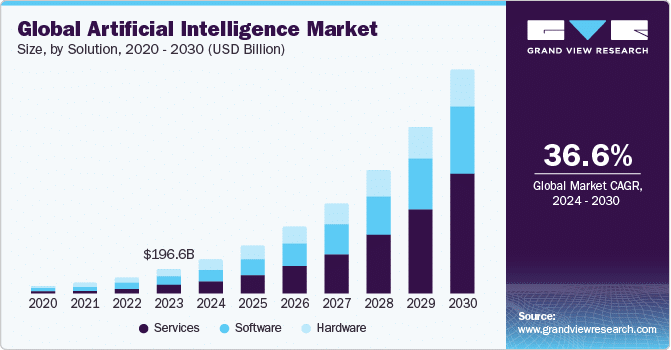
Knowing where customers search for the information and products they need is vital. According to Statista, Google processes 6.3 million searches every minute, which equals over 9 billion daily queries.
However, social media and e-commerce sites are also part of the puzzle. Over 5 billion people use social media, and many are customers looking to buy. Amazon also gets 2.3 billion visits per month.
Your customers research and shop using these platforms, so you can’t ignore them. Diversifying your advertising methods is critical because you want to take advantage of those opportunities.
Understanding where customers search helps you advertise in the right spots. This article will explore the dynamic world of customer search and offer insight and strategies to help you stay ahead of the competition and maximize your exposure.
Quick Takeaways
- Your customers probably search in multiple locations.
- Advertising where they’re looking is vital.
- A multi-channel approach helps you reach more people.
- You’ll also want to look at new tools as they evolve.
Major Platforms Where Customers Search
The key to reaching customers is figuring out where they’re searching. Typical places consumers look for information and products to buy include:
Search Engines
Google is the undisputed king of search engines, handling over 82% of all internet searches. This dominance means businesses must optimize their websites for Google through Search Engine Optimization (SEO). Effective SEO practices ensure your website ranks higher in search results, making it easier for customers to find you.
Bing and Other Search Engines
While Google leads the pack, other search engines like Bing and Yahoo still play a role. Bing, for example, has a 10.51% market share, while Yahoo sits at 2.67%. Optimizing for search engines can help you reach a broader audience and also assist as you tap into specific markets that might be less competitive than Google.
Social Media
Facebook, TikTok, YouTube, Instagram, and X
Social media platforms are becoming powerful search tools. Facebook, Instagram, YouTube, X (Twitter), and TikTok allow users to search for content, businesses, and services within their platforms.
These searches often include hashtags, keywords, and location tags. As a result, it’s crucial for companies to maintain active and optimized profiles.
How Social Media Search Differs from Traditional Search Engines
Social media searches focus on discovering content and engaging with brands. Users might look for recommendations, reviews, or trending topics through these platforms.
The real-time, trending nature of social media makes these searches different from search engine searches. For the best results, businesses should create engaging content based on trends and interact directly with users. Encouraging reviews can boost your visibility on social media platforms, too.
E-Commerce Platforms
Amazon
Amazon is a go-to platform for product searches, so many consumers start their shopping journey there.
Optimizing your product listings on Amazon is important. You can use relevant keywords, detailed descriptions, and high-quality images, increasing your chances of attracting potential customers.
Other Major Players
E-commerce giants like eBay and Alibaba are major search platforms. They’re especially popular for niche products or international markets.
Each platform has search algorithms and optimization techniques. You’ll need to understand and leverage these tools to attract a global customer base.
Knowing where your customers search makes it easier to connect with them, and optimizing your presence across these platforms enhances your visibility. The result is more traffic to your business.
How You Can Adapt to Changing Search Trends
Adapting to changing search trends is crucial for staying relevant and competitive. Here’s how businesses can navigate these changes:
A Multi-Channel Approach
Relying on just one platform is risky. A multi-channel approach ensures you reach customers wherever they are searching. Diversifying your presence across multiple platforms increases your chances of discovery.
Keep Up with Algorithm Changes and Platform Updates
Search algorithms and platform features are always evolving. Staying informed about these changes is essential.
You’ll want to regularly update your SEO strategies and adapt to new features on platforms like Google and social media. Subscribing to industry blogs and engaging with SEO communities also improves your knowledge.
Utilize Analytics to Understand Customer Search Patterns
Analytics tools like Google Analytics, Facebook Insights, and Amazon Analytics provide valuable data. They uncover how customers find and interact with your business.
Analyzing this data helps you understand search patterns and customer behavior. You can then determine which platforms drive the most traffic and use these insights to refine your strategies and improve your visibility.
Tips for Improving Visibility Across Different Search Platforms
Follow SEO Best Practices
You’ll want to optimize your website with relevant keywords and high-quality content. A mobile-friendly design can also help you rank higher on search engines.
Other best practices to follow include:
- Aligning your content with the reader’s search intent
- Putting your main keyword early in the content
- Creating unique descriptions and titles
Create Engaging Social Media Content
The social media content you create should give your customers a reason to follow and engage with your brand. Tips include:
- Post regularly
- Create shareable content
- Use relevant hashtags
- Interact with your audience
These steps boost your visibility on social media, driving views and attracting customers.
Develop Optimized E-Commerce Listings
Create product listings on Amazon and eBay in great detail. They should be keyword-rich and visually appealing. Make sure you:
- Research relevant keywords
- Focus on your descriptions
- Invest in high-quality photos and videos
- Include customer reviews
A multi-channel approach helps you maintain a solid online presence on various platforms. You’ll also want to stay updated on algorithm changes, leverage analytics, and install practical visibility strategies to adapt to changing search trends.
Future Trends in Customer Search
The future of customer search could be heavily influenced by AI and machine learning. Estimates suggest AI could grow at a CAGR of over 37% between 2024 and 2030.
Google, Facebook, Amazon, and other industry players will likely make significant investments in this technology, driving it forward. The resulting upgrade will make AI tools even more valuable for marketers.
In the next five years, we can expect AI to enhance voice search, visual search, and predictive search capabilities. These advanced algorithms will better understand user intent and context. Searches will become faster and more intuitive as a result.
Businesses should learn about technological advancements and be ready to adapt their strategies. Investing in AI-driven tools and improving SEO practices are steps toward this goal. This technology will be crucial for staying ahead in the evolving landscape of customer search.
Go Where Your Customers Are Searching
Your customers will search in many locations. So, focusing on a single advertising type makes little sense.
A multi-channel strategy makes it more likely you’ll reach your customers. Staying current on the latest tools and trends can also help.
No matter where you advertise, you’ll need engaging content to drive views. Marketing Insider Group can help with that goal. Contact us to learn about our Content Builder Services. You can also reach out to schedule a free consultation with our team.







